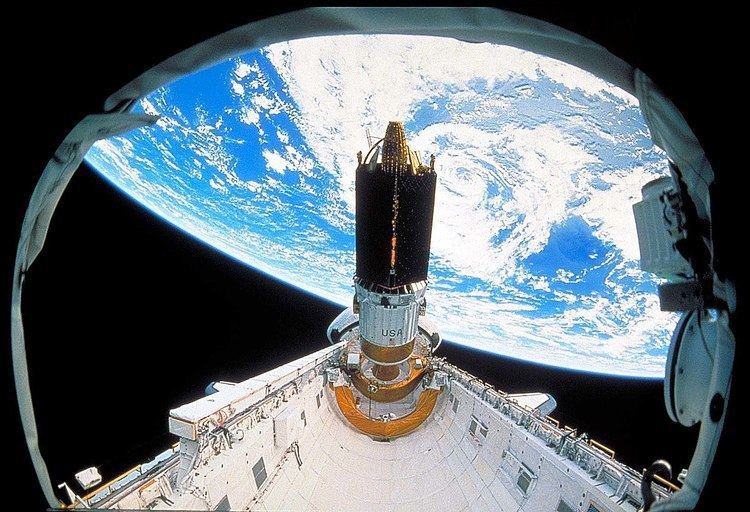COSPAR ID 1989-021B Inclination 10.15° Launch mass 3,180 kg Disposal Decommissioned | Inclination 10.15° Launch date 13 March 1989 | |
 | ||
Mission duration 10 years (design life)22 years (actual) Longitude 41° West (1988-2005); 46° West (2005—2011) Similar TDRS‑3, TDRS‑7, TDRS‑6, TDRS‑9, TDRS‑1 | ||
TDRS-4, known before launch as TDRS-D, is an American communications satellite which was operated by NASA as part of the Tracking and Data Relay Satellite System from 1989 until 2011. It was constructed by TRW, based on a custom satellite bus which was used for all seven of the first generation TDRS satellites.
Contents
History
TDRS-D was launched aboard Space Shuttle Discovery during the STS-29R mission in 1989. Discovery launched from Launch Complex 39B at the Kennedy Space Center at 14:57:00 UTC on 13 March 1989. TDRS-D was deployed from Discovery a few hours after launch, and was raised to geostationary orbit by means of an Inertial Upper Stage.
Deployment
The twin-stage solid-propellant Inertial Upper Stage made two burns. The first stage burn occurred shortly after deployment from Discovery, and placed the satellite into a geosynchronous transfer orbit. At 03:30 UTC on 14 March, it reached apogee, and the second stage fired, placing TDRS-D into geosynchronous orbit. At this point it received its operational designation, TDRS-4. It was placed at a longitude 41 degrees west of the Greenwich Meridian, from where it provided communications services to spacecraft in Earth orbit, including the Space Shuttle and International Space Station. In 2005, it was relocated to 46° West.
Retirement
TDRS-4 completed its planned mission in November 2011, and was subsequently removed to a disposal orbit 350 kilometres (220 mi) above GEO belt, per International Telecommunications Union (ITU) and United Nations (UN) recommendations, in early December 2011. In May 2012 NASA reported that the orbit-raising manoeuvre had been completed successfully, and the spacecraft had been retired.
